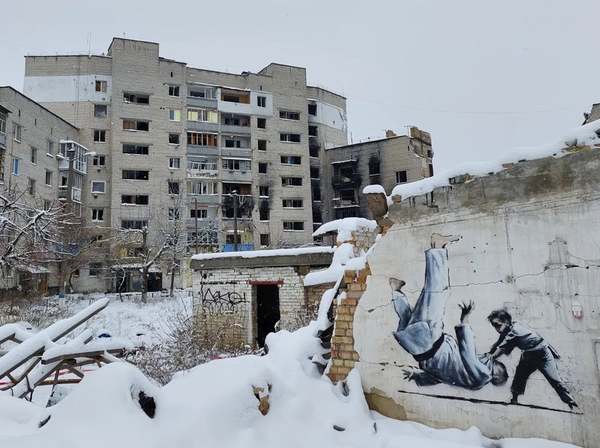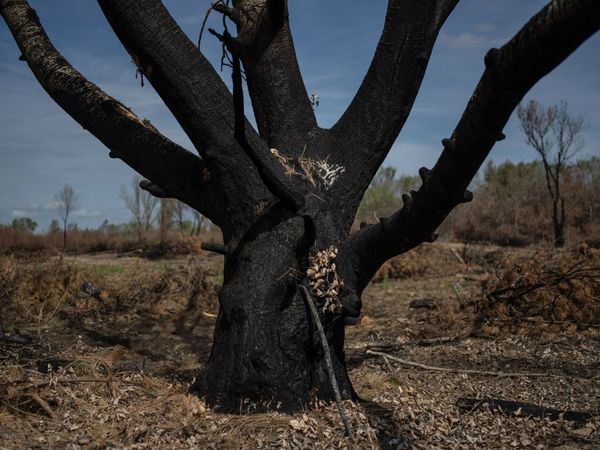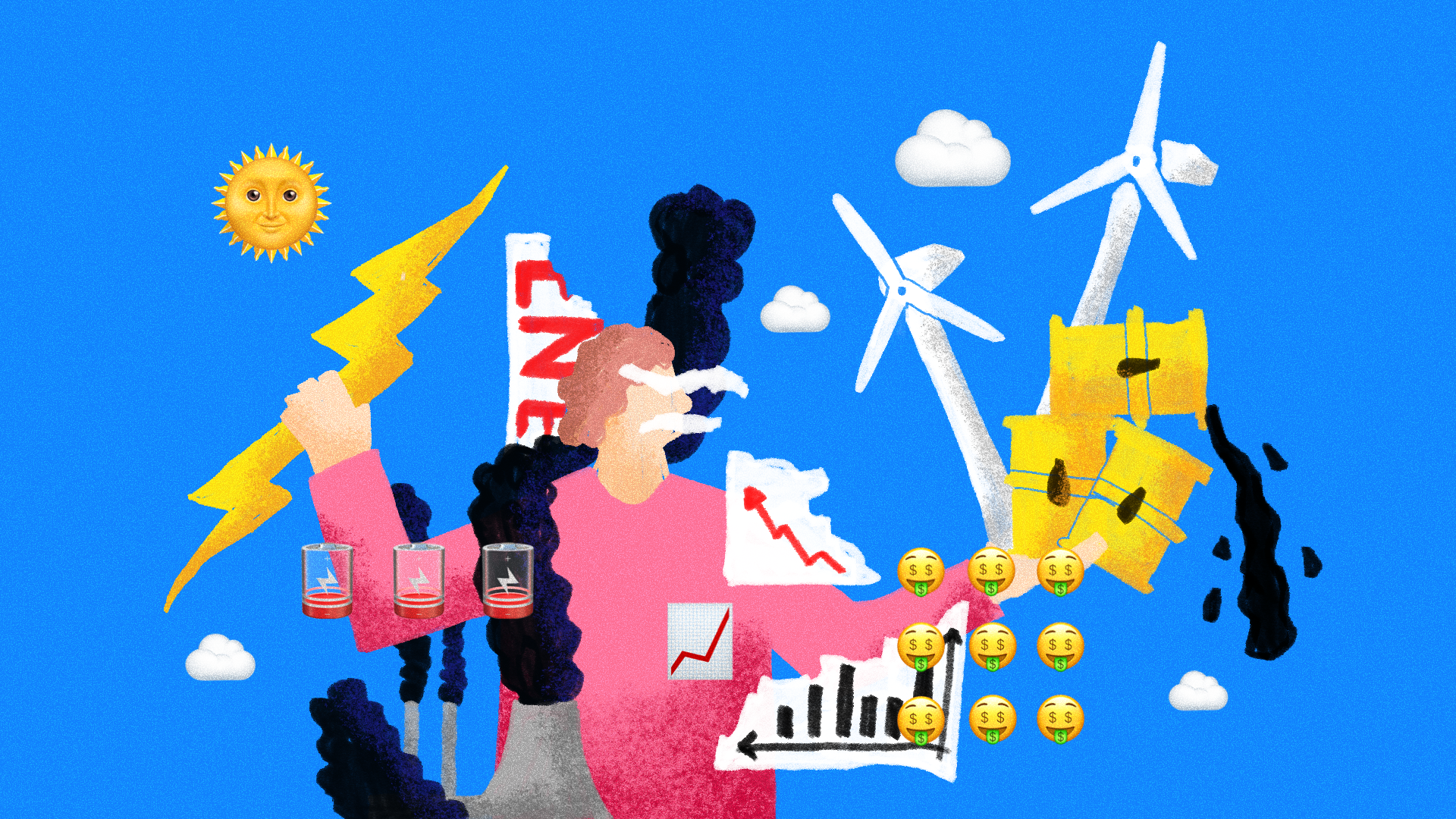The winter is coming to an end, meaning our region survived one of the most challenging heating seasons caused by the energy crisis. How can we ensure a secure, independent energy supply in the future? We were searching for the answers from a Hungarian perspective with Ottó Toldi, Ph.D.
Let us start with the most difficult question: can Hungary achieve energy sovereignty? And if yes, how?
We currently import 85% of our natural gas and 90% of our oil consumption. Regarding electricity, the figure is 32%, but sometimes it climbs up to 50%. But the good news is that we have all the means to ensure energy sovereignty. We have two main ways to achieve it: diversification of sources to avoid over-dependence on any single exporting country and increasing domestic production. Although we learned the opposite in school, Hungary is not poor in energy resources; our coal and lignite reserves are sufficient for hundreds of years, and in theory, our renewable energy potential is 2.5 times higher than our primary energy consumption. We also have uranium, in case the options for import would become more limited. It is impossible to exploit coal and lignite in a green way at the moment, and weather-dependent renewables cannot yet replace traditional power generation technologies because of security of supply issues. Still, it is good to note that these resources could be used in a worst-case scenario. Domestic hydrocarbon extraction could also be substantially increased by restructuring the economic regulations. While in the case of crude oil, most proven oil reserves are indeed under production, regarding natural gas, the picture is much more nuanced. Around one-third of the 73 bcm (billion cubic meters) of the proven natural gas reserves are produced (23.6 bcm), with a further 14.4 bcm being prepared for extraction. Nonetheless, the real opportunity for Hungary to achieve energy sovereignty lies in our unconventional gas reserves. The estimated amount is more than 3,926 bcm, of which 1,566 bcm can be extracted, considering the future developments’ potential. Even if the actual number is lower, the amount could cover the already declining annual domestic consumption of ten bcm. Furthermore, in the current turbulent situation with the Russo-Ukrainian war, the second license extension of the Paks Nuclear Power Plant, i.e., to postpone the planned phase-out from 2032-37 to after 2052, is inevitable if Hungary wants to maintain the security of energy supply. In addition, the construction of the Paks 2 new nuclear facilities and the complete refurbishment and long-term operation of the domestic lignite-fired Mátra Power Plant are also unavoidable.

The European Union has recently strengthened its energy cooperation with Azerbaijan and the Gulf countries. But to what extent and when can these resources help to eliminate Europe’s energy dependence on Russia?
The ten bcm increase in natural gas imports from Azerbaijan and the construction of the high-voltage, partially submarine power cables to Europe with a planned completion date of 2026-2027 are not very significant contributions in the short term. The importance of such projects lies in the building of infrastructure linking the large European market with energy-rich regions beyond Russia, such as the Middle East. This way, Europe’s energy supply can be diversified. And in the future, the amount of energy imported from the Middle East could significantly exceed the current levels.
The discovery of approximately 2500 billion cubic meters of giant gas fields near Cyprus is also recent big news. It could solve Europe’s energy crisis for a long time. But when will we benefit from this discovery, and how can it impact Southeast Europe?
We know since 2011 that the Eastern Mediterranean holds 2,500 bcm of extractable natural gas. For comparison, the European Union’s annual gas consumption is around 400 bcm. A consortium formed by Italy’s Eni and France’s TotalEnergies has started the work on a field containing about 72 bcm of natural gas near Cyprus. Production is expected to start in about a year. This discovery is highly significant, as it could substantially contribute to solving Europe’s gas supply problems. But there is a problem: the region is rife with political and even military conflicts. The Greek-Turkish relations are quite hostile, and this, of course, limits the Cypriot government’s options. Moreover, Israel is also expecting a share of the natural gas around Cyprus, and Syria, Lebanon, and Egypt are also interested, not to mention the global energy companies. I am afraid all these factors will hinder the plans for rapid and smooth natural gas production.

How do you see Central and Eastern Europe’s energy sovereignty from an academic perspective? Which countries have performed best in terms of resource diversification?
Working on diversifying natural gas resources to reduce the dependence on Russian imports has been a priority in Central and Eastern European energy policy since the early 2010s. But the EU’s leadership was not so supportive in this regard: the Nabucco and South Stream pipeline projects failed because of the Commission’s objections. The regional cooperation with the Visegrád Group has been much more successful. Hungary has, in fact, entered the EU markets through the continuous construction of border crossing capacities since 2010; the Slovak-Hungarian and Austrian-Hungarian interconnectors play an especially crucial role. Based on the capacity of the two interconnectors, the import potential from the west is 10-12 bcm/year, which theoretically covers our total import needs. So, the main issue is no longer the infrastructure but the availability of resources. In a war situation, it is not surprising that the announcement that the so-called North-South Gas Corridor was completed after ten years was overlooked. Still, this pipeline network connects our region with the existing Świnoujście and the planned Gdańsk Polish LNG terminals in the north and the Krk terminal at the Adriatic Sea in the south; both the Croatian and the Polish terminals have already supplied LNG to Hungary. If you want me to rank the CEE countries, I would say that perhaps Czechia had the easiest task of achieving resource diversification, mainly due to its advantageous location. In Poland, the extreme fear of dependence on Russia led them to connect to the Scandinavian-Baltic energy systems quickly. But as I explained above, Hungary is not in a bad situation either.

Which investments are needed to strengthen the energy sovereignty of Central and Eastern Europe? New LNG terminals, exploitation of Romanian fields, and a mix of green and nuclear energy?
You basically answered your question. The North-South Gas Corridor has great potential; it can be extended to the new LNG terminals in Northern Germany and the second Polish terminal in Gdańsk. Moreover, in the south, the Krk terminal will undergo a major expansion, and the Slovenian and Northern Italian terminals will also become accessible. Romania is also building an LNG terminal (Neptun Deep) from which gas could reach Hungary via the BRUA pipeline. Regarding the future of the other energy production modes, we already discussed above what is needed: the second license extension of the Paks Nuclear Power Plant, the construction of Paks 2, upgrading the Mátra Power Plant, and increasing the use of wind energy as a new element.
Thanks to the mild winter, European gas storage levels are higher than usual; 83.5% of the EU gas storage was filled at the beginning of January. How much of a relief will this be in 2023? Can continuous, planned purchases mitigate the energy crisis?
We should wait to answer this question. If the winter remains as cold as the current weather, the gas storage facilities will be empty by April, and prices could skyrocket by the start of the restocking season. Moreover, gas shortages are expected, with the Commission estimating a shortfall of 30 bcm and the International Energy Agency estimating a shortfall of 60 bcm to get through 2023. On the other hand, if the rest of the winter is mild and spring comes early in meteorological terms, there may be gas left in storage, and we will not be starting from zero. Still, it is interesting to note that due to the Commission and the Member States pushing for sanctions, we are again highly dependent on the weather.
Ottó Toldi, Ph.D., is the Research Director of the Climate Policy Institute in Budapest. He graduated as an ecologist.

Ukraine commemorates the anniversary of the war with Banksy stamps

Hungarian photographers unite in memory of Simon Móricz-Sabján










